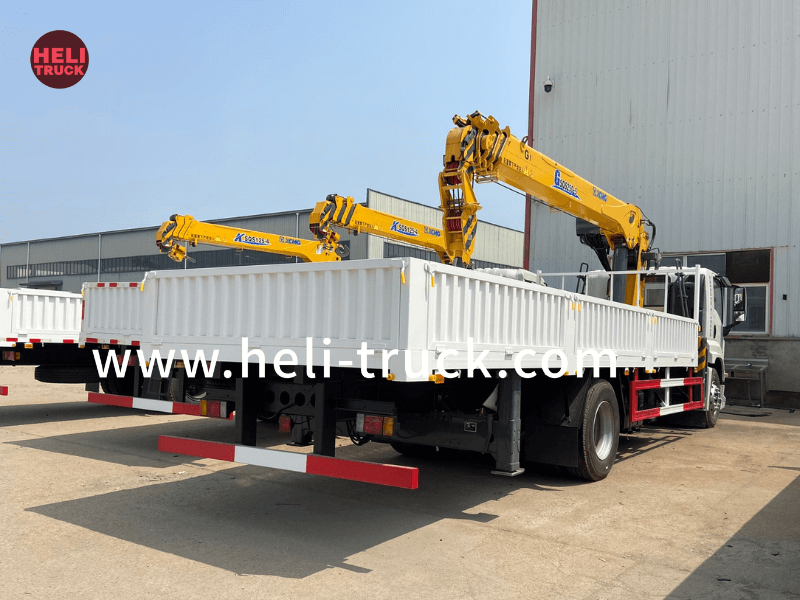Introduction
Garbage compactor trucks play a crucial role in waste management systems around the world. These specialized vehicles are designed to collect and compact solid waste efficiently, making them an essential tool for keeping our cities clean and hygienic. In this article, we will delve into the specifications of garbage compactor trucks, exploring the various features and technologies that make them effective in handling different types of waste materials.

1. Types of Garbage Compactor Trucks
There are several types of garbage compactor trucks available in the market, each designed for specific waste management needs. The most common types include rear-loading compactor trucks, front-loading compactor trucks, and side-loading compactor trucks. https://www.heli-truck.com -loading compactor trucks are equipped with a hydraulic compactor at the rear of the vehicle, making them suitable for collecting waste from residential areas. Front-loading compactor trucks, on the other hand, feature a front-loading mechanism that is ideal for commercial and industrial waste collection. Side-loading compactor trucks are designed with a side-loading mechanism, making them convenient for narrow streets and areas with limited access.
2. Engine Specifications
One of the key components of a garbage compactor truck is its engine, which provides the power needed to operate the vehicle and the compaction mechanism. Garbage compactor trucks are typically equipped with diesel engines due to their high torque output and fuel efficiency. The engine specifications of a garbage compactor truck may vary depending on the manufacturer and model, but common engine sizes range from 5 to 12 liters, with horsepower ratings between 200 to 500 hp. Additionally, modern garbage compactor trucks are designed to meet stringent emissions standards, with many models featuring advanced exhaust treatment systems to reduce harmful pollutants.
3. Compaction System
The compaction system is the heart of a garbage compactor truck, responsible for compressing the waste material to maximize the truck's carrying capacity. The compaction system consists of a hydraulic ram or blade that pushes the waste into the body of the truck, reducing its volume and increasing the time between emptying cycles. The compaction force generated by the system is a critical factor in determining the efficiency of the garbage compactor truck. High compaction forces result in denser waste loads, reducing the number of trips required to transport the waste to disposal sites.
4. Body Capacity and Design
The body capacity of a garbage compactor truck refers to the volume of waste it can hold before reaching its maximum compaction level. Garbage compactor trucks are available in various body capacities, ranging from 5 to 40 cubic yards, with larger trucks typically used for commercial and industrial waste collection. The design of the truck body also plays a significant role in its efficiency, with features such as hopper openings, access doors, and sealing mechanisms contributing to the ease of waste collection and compaction.
5. Hydraulic System
The hydraulic system of a garbage compactor truck is crucial for operating the compaction mechanism and other hydraulic components, such as the loading arms and ejector plates. The hydraulic system relies on a hydraulic pump, hydraulic fluid, and control valves to generate the pressure needed to move and compact the waste material. The efficiency and reliability of the hydraulic system are essential for ensuring smooth operation and minimal downtime of the garbage compactor truck.
6. Safety Features
Garbage compactor trucks are equipped with various safety features to protect the operators and ensure the safe handling of waste materials. Common safety features include rearview cameras, proximity sensors, emergency stop buttons, and warning alarms to alert pedestrians and other vehicles of the truck's presence. Additionally, many garbage compactor trucks are designed with ergonomic features, such as adjustable seats and control panels, to enhance operator comfort and reduce fatigue during long working hours.
7. Maintenance Requirements
Proper maintenance is essential for ensuring the longevity and performance of a garbage compactor truck. Regular maintenance tasks include checking and replacing hydraulic fluid, inspecting hydraulic hoses and fittings, lubricating moving parts, and monitoring the condition of the compaction system. Scheduled maintenance intervals are typically recommended by the manufacturer to prevent costly repairs and downtime. Additionally, operator training and adherence to safety protocols are crucial for maximizing the lifespan of the garbage compactor truck.
8. Environmental Considerations
Garbage compactor trucks play a vital role in waste management and environmental sustainability. By compacting waste materials and reducing the number of trips to disposal sites, these vehicles help minimize fuel consumption and greenhouse gas emissions. Many garbage compactor trucks are also designed with energy-efficient features, such as automatic engine shutdown systems and regenerative braking, to further reduce their environmental impact. Recycling and waste diversion programs can further enhance the environmental benefits of garbage compactor trucks by promoting the reuse and recycling of valuable resources.
Conclusion
Garbage compactor trucks are essential tools in modern waste management systems, offering efficient and hygienic solutions for collecting and transporting solid waste. By understanding the specifications and features of garbage compactor trucks, waste management professionals can select the right vehicle for their specific needs and maximize operational efficiency. With advancements in technology and design, garbage compactor trucks continue to evolve to meet the challenges of urbanization and environmental sustainability, making them indispensable in keeping our cities clean and livable.
